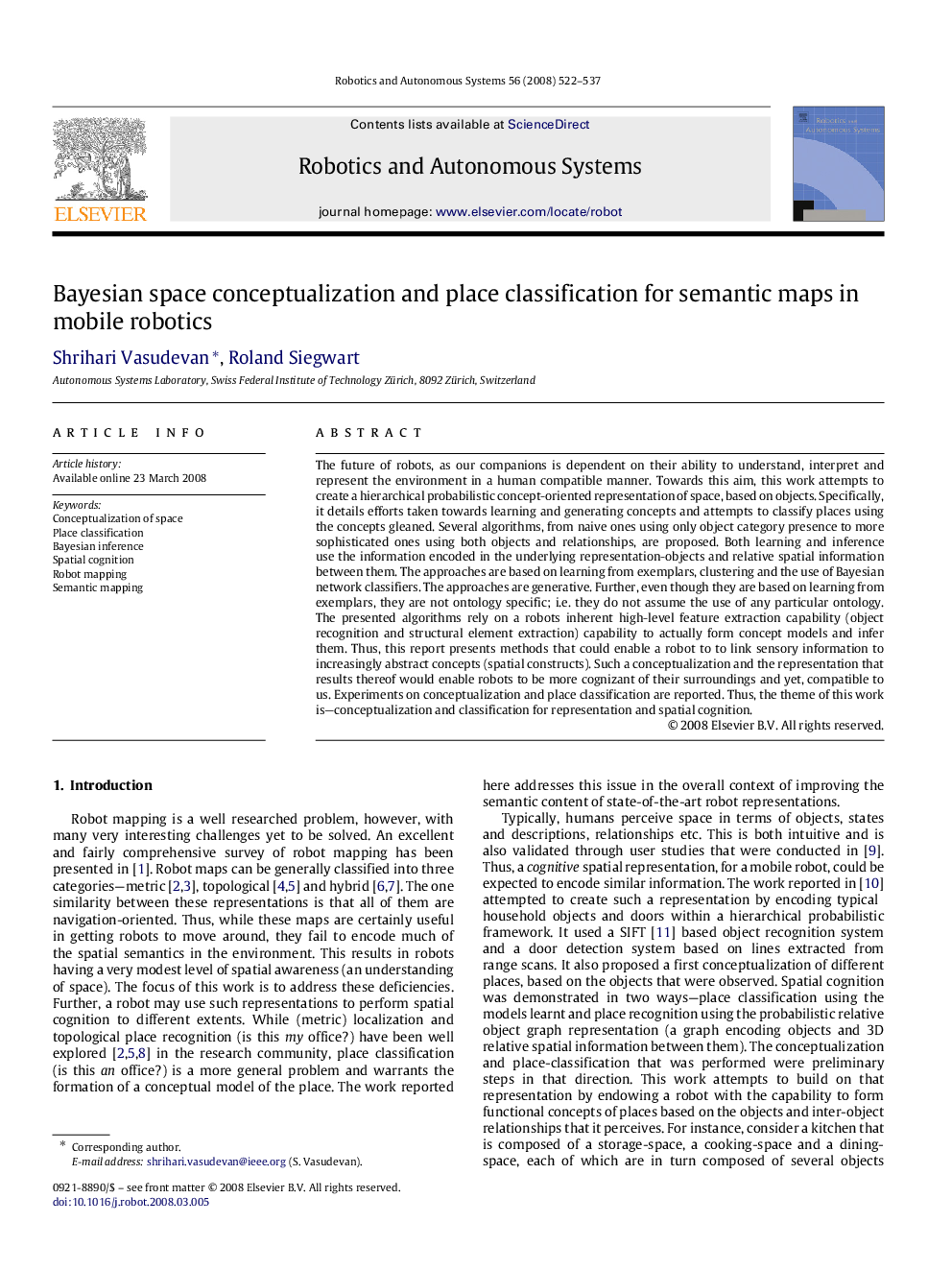| Article ID | Journal | Published Year | Pages | File Type |
|---|---|---|---|---|
| 413101 | Robotics and Autonomous Systems | 2008 | 16 Pages |
The future of robots, as our companions is dependent on their ability to understand, interpret and represent the environment in a human compatible manner. Towards this aim, this work attempts to create a hierarchical probabilistic concept-oriented representation of space, based on objects. Specifically, it details efforts taken towards learning and generating concepts and attempts to classify places using the concepts gleaned. Several algorithms, from naive ones using only object category presence to more sophisticated ones using both objects and relationships, are proposed. Both learning and inference use the information encoded in the underlying representation-objects and relative spatial information between them. The approaches are based on learning from exemplars, clustering and the use of Bayesian network classifiers. The approaches are generative. Further, even though they are based on learning from exemplars, they are not ontology specific; i.e. they do not assume the use of any particular ontology. The presented algorithms rely on a robots inherent high-level feature extraction capability (object recognition and structural element extraction) capability to actually form concept models and infer them. Thus, this report presents methods that could enable a robot to to link sensory information to increasingly abstract concepts (spatial constructs). Such a conceptualization and the representation that results thereof would enable robots to be more cognizant of their surroundings and yet, compatible to us. Experiments on conceptualization and place classification are reported. Thus, the theme of this work is—conceptualization and classification for representation and spatial cognition.
